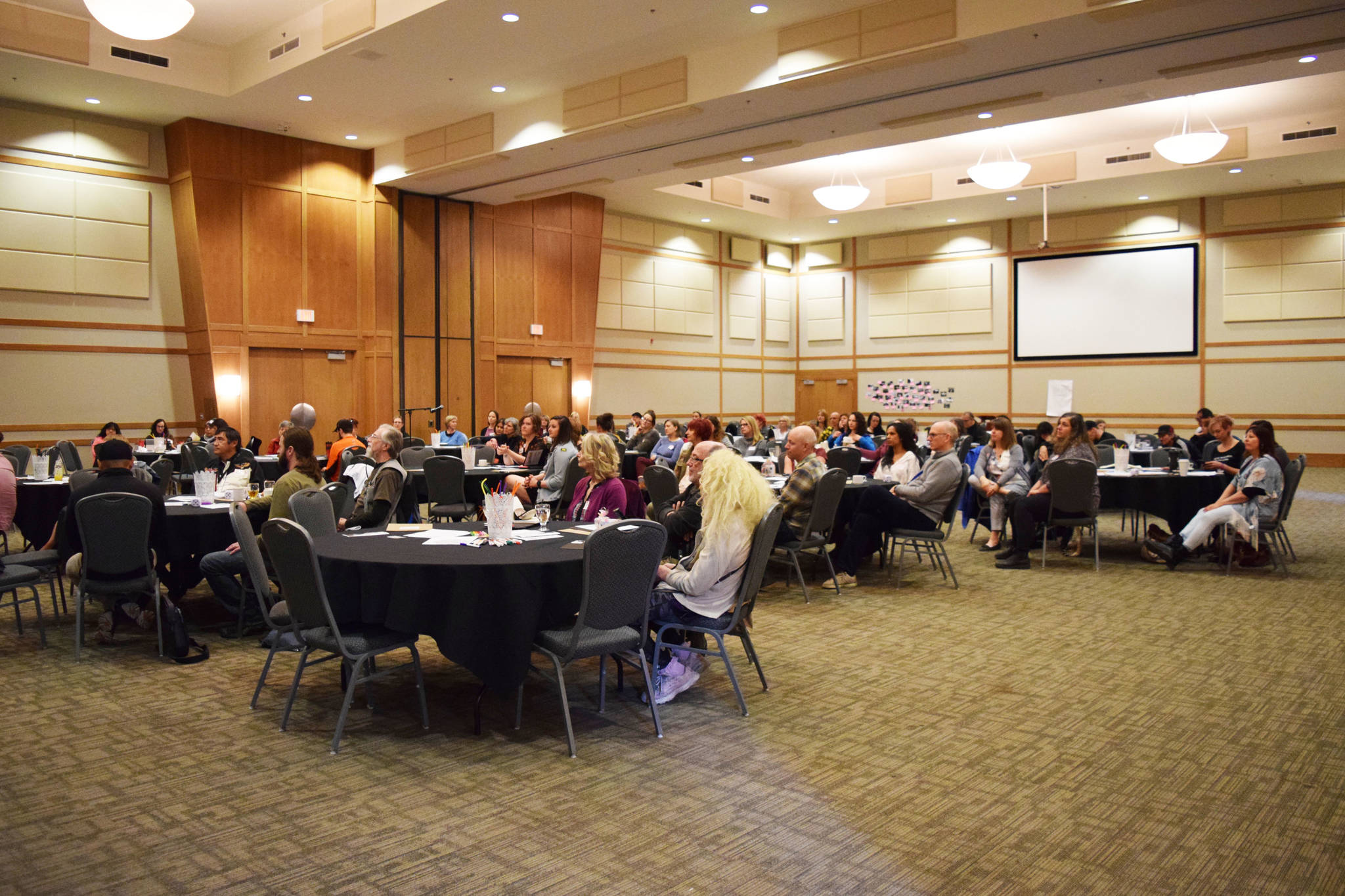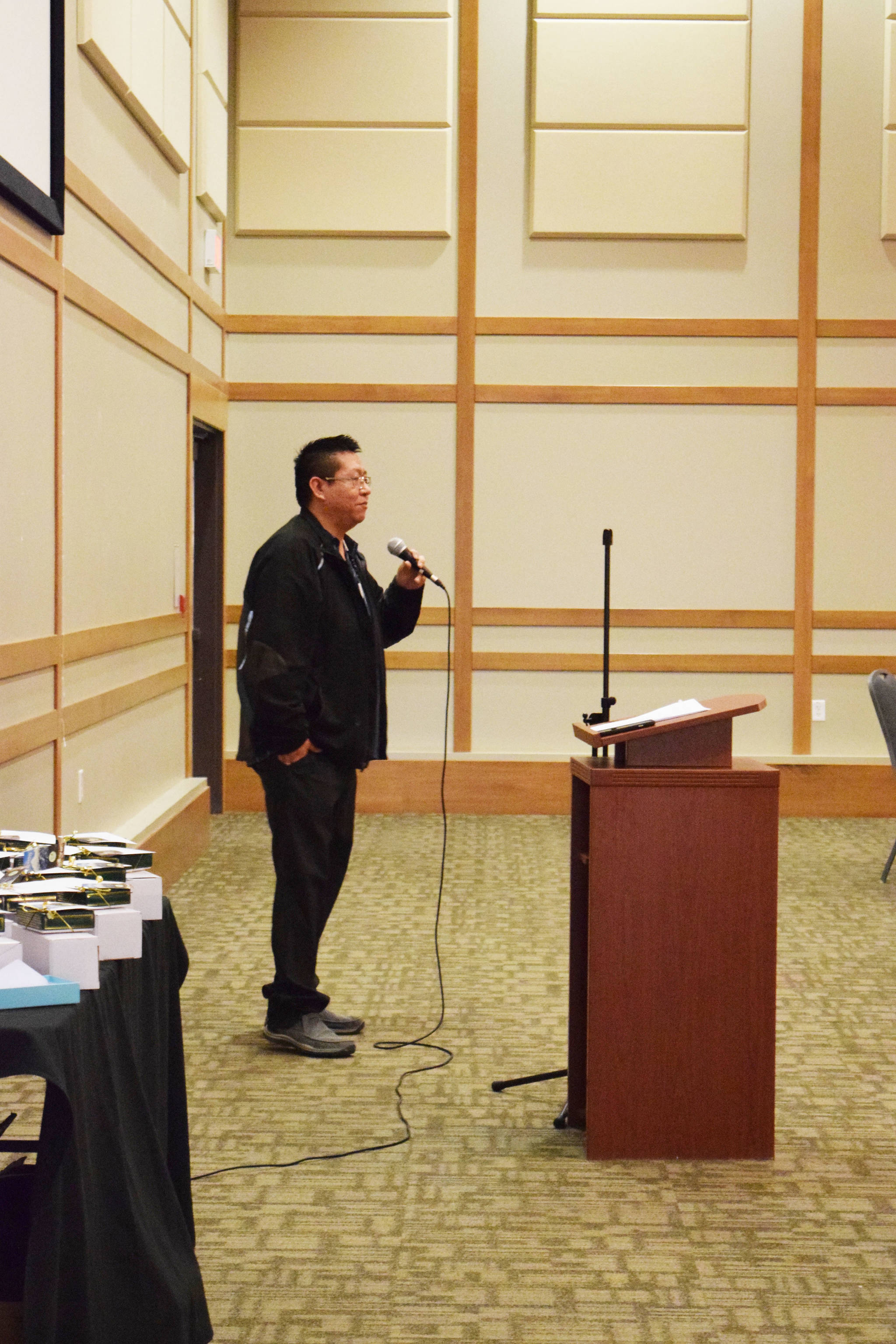The Rural and Remote Harm Reduction Conference took place last week at the Kimberley Conference Centre. The conference aims to explore how rural and remote communities can help with harm reduction and safer use through a foundation of trauma healing.
The conference took place over two days, April 17 and 18, 2019, featuring presenters, drug checking, current emerging treatments for opioid use disorder, woman harm reduction and stigma and the compassion project.
READ MORE: The Compassion Project: The silent voices of the opioid crisis
Paulette Sutherland, Team Lead and Peer Development Coordinator for ANKORS East Kootenay, says that one of the main focuses at the conference is peers; holding a safe space for people who use drugs.
ANKORS, or the AIDS Network, Outreach and Support Society, provides services throughout the Kootenay region focused on education in a non-judgemental manor.
Sutherland says that peer work is an effective method of harm reduction, and that the conference aims to embrace the strength of rural communities as they practice evidence-based practices for reducing harm.
“We are bringing together folks from outlying areas, such as Kamloops, Prince George and lots of folks from the West Kootenay and the East Kootenay. Basically what we did, was we wanted get together to talk about the rural experience around harm reduction.
“So there are lots of people that are working in harm reduction here, [and] there’s a lot of peers that are doing peer work - meaning they’re out there; they’re the ones saving people’s lives from overdose, they’re doing training for folks that we might not get to reach. So we have a big peer component here.
“The idea to bring them together was so that they see that they’re not alone and that through a shared experience we can work on different topics throughout the next two days to build a richer, rural experience for people.”
Jared Basil, from Yaman Nukiy & the Lower Kootenay Band, started off the conference with a story of his past and present. He explained that he started drinking and using other substances at a very young age and followed this path for some time. Years later he is using his sobriety and his journey to try and help others.
“I’ve always been very open with the hope and the intention that through my experiences, if I can help people think differently, rather than thinking better, if we can get people to think differently about harm reduction we can get people to think differently about breaking down the stigma with respects to indigenous cultures and the cultural values and perspectives that we have to offer,” said Basil at the conference. “Not only that, but also trying to raise awareness. Men’s healing is coming into the forefront and I think it’s about time that we, as men, start talking about some of our emotions and talking about some of the things that we’ve been through.”
Along with presenters and workshops, there is also a wellness room and a drug-checking facility at the conference.
Chloe Sage, who runs the drug checking program at ANKORS in the West Kootenay, was at the conference to help raise awareness about harm reduction. Most of the drug-checking work is done out of the Nelson office, however she has brought their FTIR spectrometer drug-checking machine to Grand Forks and will soon be bringing it to Cranbrook.
Sage and her team can also be found at the Shambhala Music Festival where every year, she says, they test thousands of drugs over the course of the week.
Sage explained that the FTIR spectrometer is an advanced drug-checking machine that can detect multiple ingredients in one substance. It uses infra-red light to bounce it off of a substance, which picks up a spectrum, or “thumb print” of whatever substance it is. It then sends the information over to a laptop that is connected to the machine and has software capable of looking at thousands of library entries. The thumb print is then matched to one or more library entries.
“It only takes a few minutes to identify each substance and it doesn’t wreck the substance either, so I can give it back to the person after. That’s really helpful for folks, they’re not going to loose any of their substance,” Sage explained, adding that the test is completely anonymous and free of any judgement.
“We pair this [test] with a fentanyl test strip [as well] because the machine can pick up things down to 3 or 4 per cent, but fentanyl can a lot of times be underneath that, so we wouldn’t pick it up on the machine. If we pick it up on the machine then it’s a higher concentration, so we always do a fentanyl test strip with the machine so I’m giving two results. Sometimes there are four different substances in there.”
Sage says that ANKORS has been doing drug checking for the last 16 years, but it’s only recently started to expand across the country. Their FTIR machine, which cost over $40,000, was not government funded. The purchase was made possible through a Go Fund Me campaign with ANKORS and a large donation from Shambhala.
READ MORE: Shambhala invests in ANKORS’ drug-testing tech
“There’s a province-wide program now that is being done, so it’s happening all over, but in Europe it’s been happening for 30 years,” Sage said. “The reason why we do it is to monitor drug trends so we can kind-of see what’s happening out on the streets. If we only have reports of what is confiscated, which is what we had before drug checking, then it’s not giving us what’s left on the streets.”
She explained that this can also help ANKORS send out warning signs or alerts if substances like fentanyl or carfentanil are detected in high concentrations.
“In the last month in Vancouver they’ve had to do five different alerts and three of them have been carfentanil oriented,” said Sage. “We work with the Health Canada DAS [Drug Analysis Service] labs where if we have a sample that we’re worried about, we send it to the labs in Vancouver and they can do confirmatory testing for us.”
READ MORE: Carfentanil found in 15% of overdose deaths in January: B.C. Coroner
To find out more information about harm reduction in rural communities or how you can get involved visit ankors.bc.ca or check them out on Facebook.

